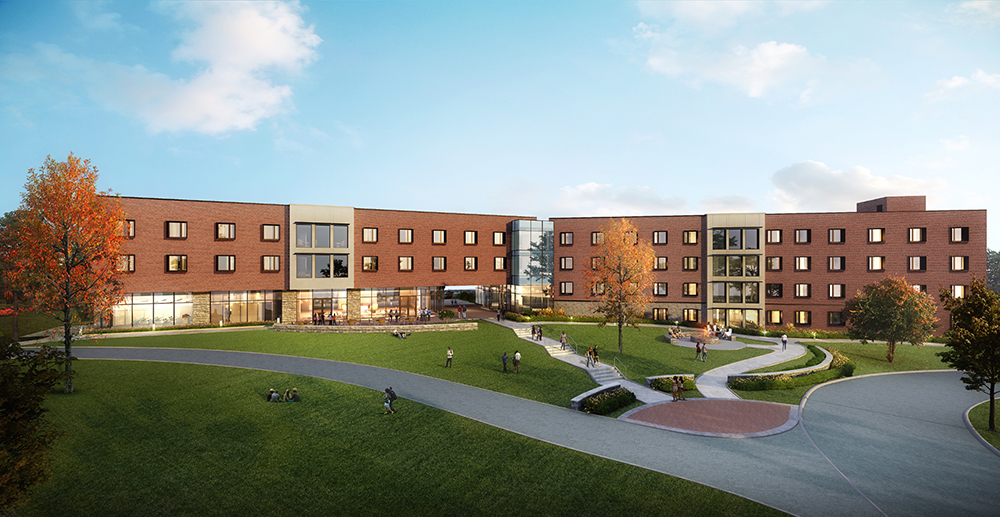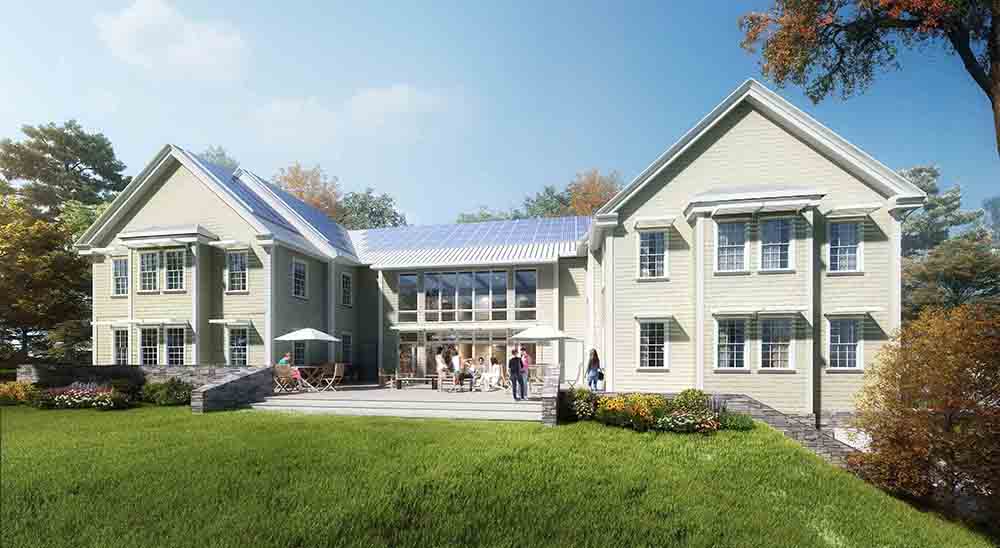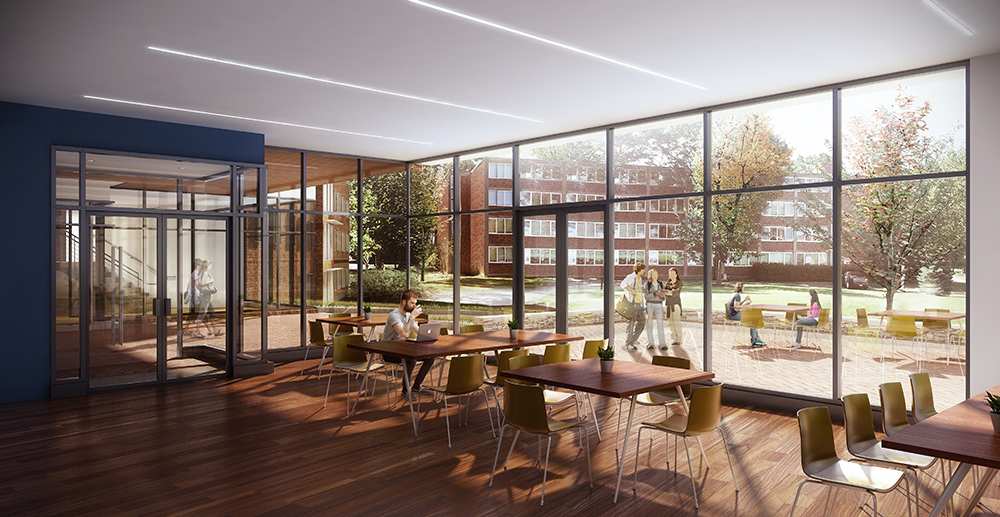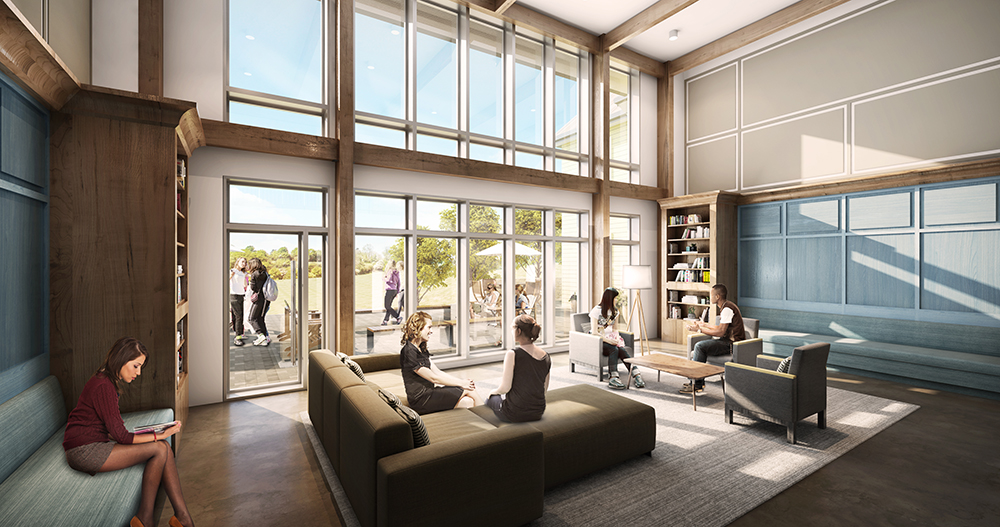
Norton, MA SGA, a tech-forward architecture and interior design firm, has designed two residence halls that will be the first in Massachusetts to meet the rigorous energy-efficiency standards of the Passive House Institute US (PHIUS). One is Garfield House at Williams College in Williamstown; the other will be a first and second-year student residence hall at Wheaton College in Norton.
Passive House buildings, according to PHIUS, comprise “a set of design principles used to attain a quantifiable and rigorous level of energy efficiency within a specific quantifiable comfort level.” Energy efficiency stems from continuous insulation throughout an airtight building envelope, high-performance windows, balanced heat- and moisture-recovery ventilation, a minimal space-conditioning system, and management of solar gain.

PHIUS could be viewed as “LEED on steroids – the energy performance targets far exceed those in even the most aggressive of LEED-certified buildings,” said Jacob Higginbottom, AIA, LEED AP, SGA’s director of higher education.

at Wheaton College - Norton, MA
The two residence halls, both slated to open for the start of the fall semester of this year, differ significantly in size and structure. SGA’s project at Williams College will be a 40-bed, suite-style residence comprising 16,500 s/f and constructed with enhanced wood framing and structural insulated panel (SIPS) systems. Wheaton’s residence hall is far larger in scale, containing 45,000 s/f and 178 beds, with singles and doubles off a double-loaded corridor. Its frame is steel with metal stud backup, and it has a veneer of brick and metal panel.
Both envelopes have been custom designed to fit in their surrounding context while meeting PHIUS standards for air infiltration and thermal performance. Williams’s residence hall is not actively cooled; it relies instead on passive ventilation and phase change materials for cooling. Wheaton is conditioned with air-to-water heat pumps, high-efficiency ERV, and passive valence units. Both projects use shower drainwater heat-recovery systems to capture and re-use heat from showers to offset domestic hot water loads, which are one of the largest energy loads in residence hall design.
“Through these projects, SGA has gained significant experience in applying PHIUS principles to two very different building types, and has developed a keen sensitivity to the pros and cons of each system,” said Higginbottom. “We owe our expertise in part to working with clients who are as committed to sustainability and energy performance as the Williams and Wheaton administrations are. And we look forward to applying this experience to projects of other similarly advanced clients.”
Benefits to Institutions

Williams College - Williamstown, MA
It’s not easy to find PHIUS buildings on college campuses yet, but that is likely to change in the near future, as the benefits of these buildings become better known. Higginbottom explains, for example, that PHIUS residence halls can be designed to offer upwards of a 50 to 80% reduction in energy costs compared to the already aggressive energy code in Massachusetts. Furthermore, the cost premium is playing out to be in the range of 2.5%, which typically results in a very attractive return on investment.
“We expect our PHIUS residence hall to be 70% more energy-efficient than buildings that meet the standard state code,” said Brian Douglas, Wheaton’s executive vice president of finance and administration. “These energy savings are meaningful to us, given our deep commitment to sustainability.” He adds that it will take only 10 to 12 years for the college to recoup, through energy savings, the small premium for the PHIUS design. After that, the net savings will accrue.
Williams also has a strong commitment to sustainability. The goal of the college is to reduce greenhouse gas emissions by 35% below the levels of 1990 by 2020. With this goal in mind, Williams takes “every opportunity to reduce emissions,” said Amy Johns, director of the college’s Zilkha Center for Environmental Initiatives. “From our perspective, it is the responsibility of higher education to lead, experiment with new techniques, and demonstrate best practices to other institutions and businesses.”
In addition to providing responsible design critical for global wellness, Higginbottom believes that sustainability initiatives will eventually play a larger role in students’ criteria for college selection. He predicts, “As the competition for students increases, so will the adoption of PHIUS and other similarly aggressive metrics.”
Wheaton College Residence Hall project team:
- Architect - SGA
- Civil Engineering - Bohler Engineering
- MEP/FP and Low Voltage - AHA Consulting Engineers
Garfield House at Williams College project team:
- Architect - SGA
- Construction Manager - Engelberth Construction, Inc.
- Civil Engineer - Guntlow & Associates, Inc.
 (1).png)







